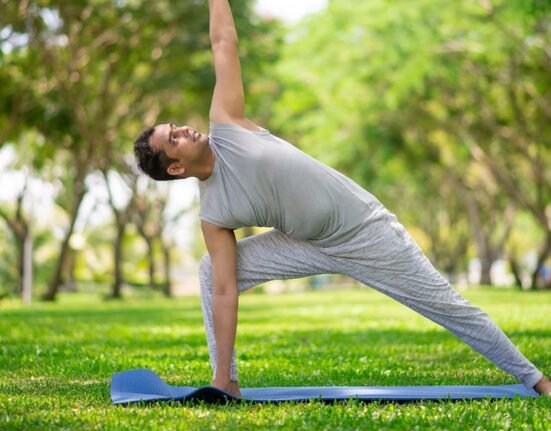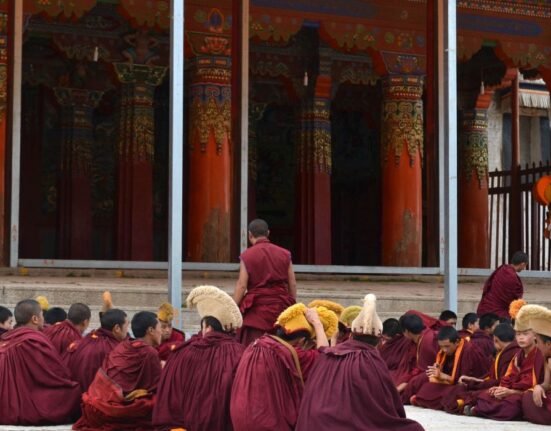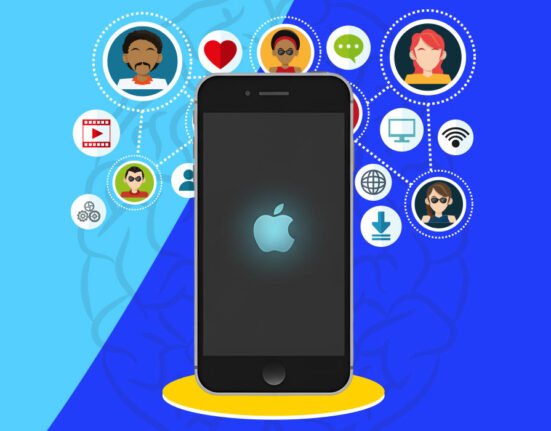Since the day one is born, his/her journey of life is said to begin. You would have heard inside hospital rooms, the parents saying- “my daughter will become a doctor” or “my son will be a pilot”, etc. The basis on which our life is set is the said journey. We are taught that way from a very early age; ‘Set goals’, ‘Find your path’, ‘chase your dreams’, ‘Aspire’; we are told. We are given checklists, plans, ideas, maps, and so much more as if we are heading towards some final destination where we will finally attain peace.
The most common question almost every teenager has faced is- where do you see yourself 5 years down the line? People ask this so often as if every one of us has our whole lives planned to the end and goals set to achieve according to age.
The metaphor is comforting; it gives a sense of safety, security, order, predictability and a sense of purpose in one’s life. But the twist is, this same metaphor can also turn out to be a trap. Because if life is really a ‘journey’, where exactly are we heading towards? And what happens if we do not ‘arrive’ there, or worse, what happens if we do arrive; what happens after that?
Therefore, if you think about it closely, life, instead of being perceived as a journey, can be seen more as a dance.
It will sound a little whimsical at first, but this simple shift in perspective has profound implications for how we live, feel, and make sense of our experiences. A journey is mostly about reaching some goal; a dance is about being in motion at all times, no matter whether you are going somewhere or are still. A journey has an end, a goal that is fulfilled. On the other hand, a dance is about the present. You don’t dance to get somewhere – you dance because the music is playing.
The Trap of Constant Progress
Modern culture is obsessed with progress. From academic achievements to job promotions, from self-improvement goals to social media milestones, we’ve built a system that rewards constant motion toward something “better.” But this journey-focused mindset can easily lead to burnout, comparison, and the feeling of never being “enough.”
Read More: Four Ways Social Media Can Be Good for Mental Health
There’s always something further to do, somewhere else to go, someone in front of you. We scroll through strategically edited timelines of other people’s lives and consider whether we’re behind on ours. The metaphor of the journey convinces us that happiness awaits ahead, not here. Peace will arrive someday, but arrival always moves.
Dancing with the Present
Compared to that, dancing is based in the now. You don’t gauge a dance by how far you’ve travelled on the floor; you gauge it by how much you felt the rhythm, how present you were in the moment. A dance welcomes flow, improvisation, and playfulness. It says: there is no hurry.
Eastern philosophies such as Taoism, Zen Buddhism, and even Hinduism, in some respects, are chanting in unison this same tune. They are calling for us to release our striving and return to being. Lao Tzu in the Tao Te Ching asks, “Do you have the patience to wait till your mud settles and the water is clear?” That is the beauty of dancing through life: having faith that clarity does not arise out of propelling forward, but out of yielding, letting go, and flowing with what is.
When we cease to struggle to control the beat, we hear a rhythm that’s been there all along.
What Dancing Through Life Looks Like
To “dance” through life doesn’t imply that we abandon goals or lose structure. It means we start relating to our experiences differently.
- When you fail, rather than noticing a detour in your path, you notice a tempo change. A pause. A slow sway before the next energetic move.
- Success, rather than marking a box and hurrying to the next milestone, you stay in joy, twirl in it, and experience it completely.
- Uncertainty, rather than requiring you to know where the music is headed, allows your body to respond naturally. You have faith that not knowing is part of the dance.
This does not imply that life is ever easy or elegant. Sometimes the music falters. Sometimes we stumble. But even in that, there is movement and meaning.
The Dance Is Not Always Pretty
There is a myth that dancing through life is always carefree and happy. But true dancers know – the strongest performances are usually born out of struggle. A dance can be dirty, raw, slow, and heavy. And that’s alright. That’s authentic. Actually, when we cease to try to make life “look good” and let it flow through us instead, we open the door to authenticity. The dance of grief, of healing. The dance of finding joy again after pain. These are not linear movements. They curve, spiral, and loop. And yet, they are still dances.
Letting Go of the Finish Line
One of the greatest freedoms that comes with shifting from journey to dance is the release of the finish line. In a journey mindset, there’s always a “next.” In a dance mindset, there is only this. This breath. This moment. This note in the song. You’re not falling behind. Not late. You’re not off track. Because there is no track.
When you come to accept life as a dance, you also cease to have to control the song. Jazz, classical, crazy EDM, or silence, you learn to move in harmony with it. You learn to trust your rhythm. You become both the music and the movement simultaneously.
How to Shift from Journey to Dance
Below are a few soft practices to embody this shift:
- Mindful Movement: Spend a few minutes every day moving without intention. Listen to music and allow your body to move in whatever way it desires. Don’t choreograph. Simply feel.
- Journal Freely: Release “goals” or formatted prompts. Write whatever comes, without censoring or editing. Allow your thoughts to dance.
- Presence Over Productivity: Ask yourself, “Am I doing this to arrive somewhere, or to enjoy the moment?” Try to let at least one daily activity be an end in itself – such as watching clouds, cooking, or sitting with a friend.
- Affirmations: Try saying to yourself gently: There is nowhere to go. I am already here. Observe how your body responds to that.
- Let Things Be Incomplete: Not everything requires a conclusion. Leave a page halfway written. Leave room in your calendar. Allow some questions to remain unanswered.
Dancing Together
Another lovely aspect of this metaphor is that dances tend to be shared. Unlike going it alone, a dance bids us connect. When we finish hurrying toward some destination, we have more room to attend to the travellers moving in sync with us. We laugh more. Rest more. Listen better. We pace each other’s rhythms, though they may vary.
And isn’t that what we really hunger for?
Final Thoughts
What if your why isn’t to arrive, but to experience it all the way? What if your mission isn’t to master your steps, but to arrive at the song, over and over? Life as a journey instructs us to keep moving. Life as a dance encourages us to stop, to spin, to inhale, and occasionally, just remain still in wonder. Perhaps the true magic is not in getting to the end, but in how you got through the middle. Therefore, when you wake up tomorrow morning, ask yourself: Am I hurrying to get there? Or am I already dancing?
FAQs
Q1: Is it wrong to have goals if I start viewing life as a dance?
Not at all. The dance metaphor doesn’t discourage goals—it simply invites a more present and mindful approach to them. You can still have direction, but instead of obsessing over the destination, you learn to enjoy the process.
Q2: Can dancing through life make me less productive?
Actually, many people find that being more present improves focus and creativity. You’re less likely to burn out and more likely to engage deeply with what you do. Dancing through life is about the quality of experience, not abandoning action.
Q3: How can I apply this mindset if I’m in a high-pressure or competitive field?
It’s possible to be in a competitive environment and still dance internally. The shift is in how you relate to your work. Even in high-stress settings, you can choose to approach tasks with fluidity, mindfulness, and a sense of rhythm rather than rigidity.
Q4: What if I feel stuck and the “music” of life seems silent right now?
Everyone goes through quiet or confusing phases. The silence is part of the dance, too. Trust that music will return—sometimes the stillness is where new movement begins.
Q5: Is this idea connected to any psychological or philosophical theories?
Yes. This approach aligns with mindfulness, existential psychology, and Eastern philosophies like Taoism and Zen Buddhism, which all emphasise being over doing, and presence over performance.
References +
- Brown, B. (2010). The gifts of imperfection: Let go of who you think you’re supposed to be and embrace who you are. Hazelden Publishing.
- Lao Tzu. (2006). Tao Te Ching (J. Legge, Trans.). Digireads.com. (Original work published ca. 6th century BCE)
- May, R. (1953). Man’s search for himself. W. W. Norton & Company.
- Nhat Hanh, T. (1991). Peace is every step: The path of mindfulness in everyday life. Bantam.
- Rogers, C. R. (1961). On becoming a person: A therapist’s view of psychotherapy. Houghton Mifflin.
- Seligman, M. E. P. (2011). Flourish: A visionary new understanding of happiness and well being. Free Press.













Leave feedback about this